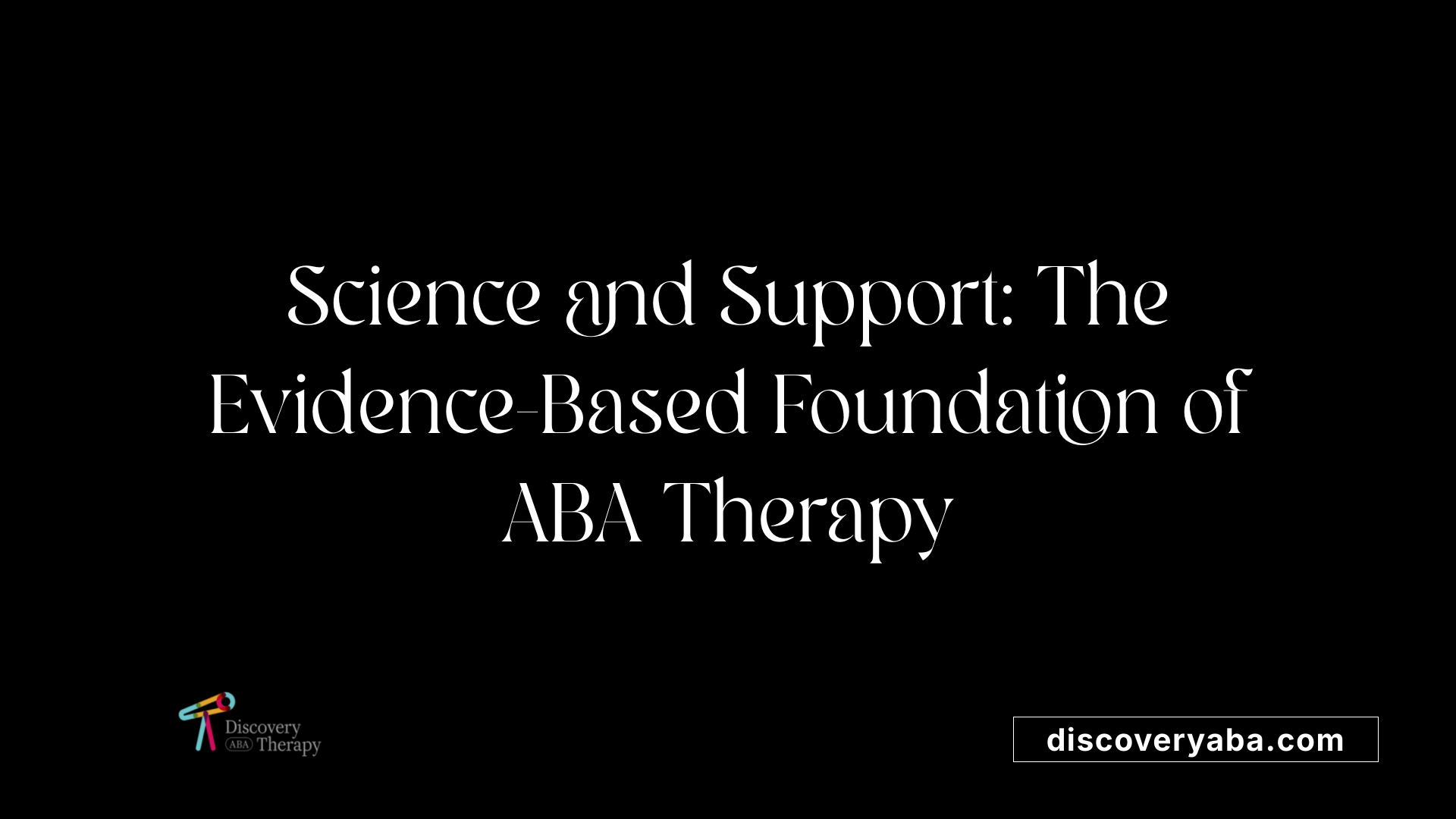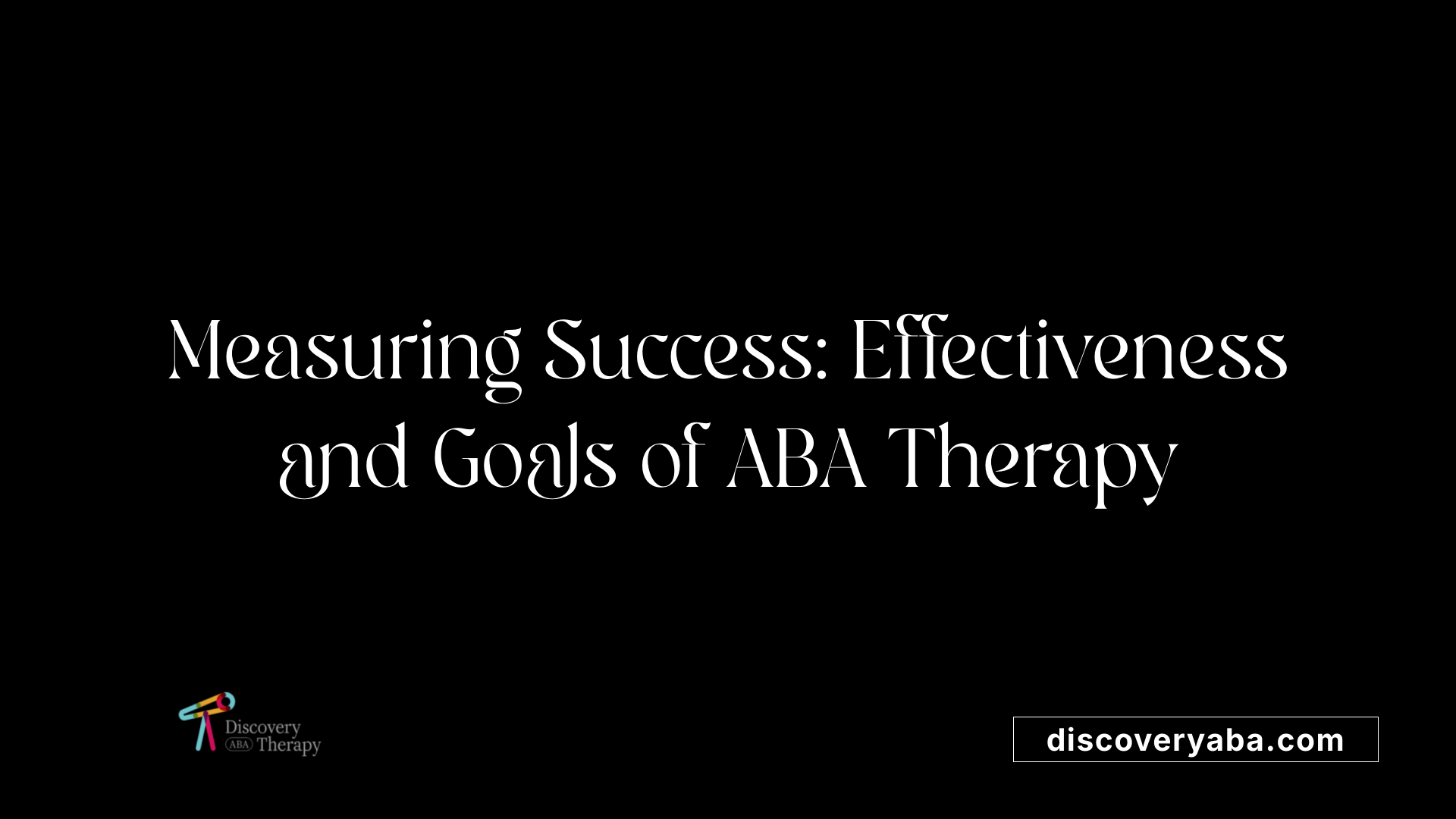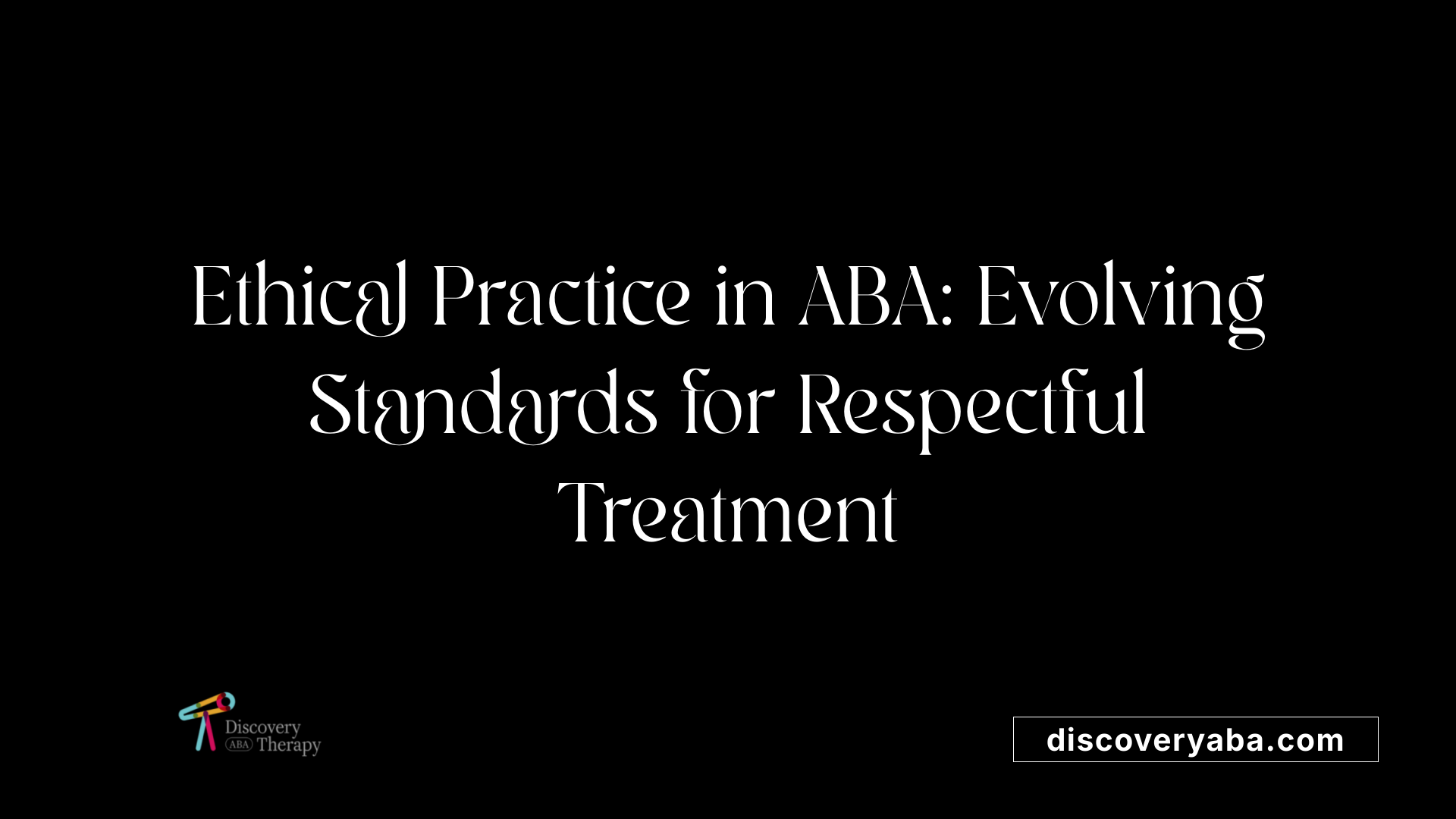Common myths about ABA therapy debunked
Separating Fact from Fiction in Autism Support Techniques

Debunking Common Myths About ABA Therapy
Applied Behavior Analysis (ABA) therapy has long been a cornerstone in supporting individuals with autism spectrum disorder (ASD). Despite its efficacy and widespread endorsement by health authorities, many misconceptions and myths persist. This article aims to clarify what ABA therapy truly is, how it works, and dispel the misunderstandings surrounding this scientifically supported intervention, emphasizing ethical practices, individualization, and its broader applications.
Understanding What ABA Therapy Is and Its Scientific Support

Is ABA therapy scientifically supported?
ABA therapy is firmly rooted in scientific research, making it one of the most validated methods for supporting individuals with autism. It is regarded as an evidence-based practice, with thousands of peer-reviewed studies confirming its effectiveness.
The therapy uses principles from behavioral psychology, particularly understanding how antecedents (what happens before a behavior) and consequences (what happens afterward) influence actions. Techniques like positive reinforcement are central to ABA, encouraging desired behaviors by providing rewards that motivate individuals
Recognized as the 'gold standard' treatment for autism, ABA has been endorsed by major health authorities including the U.S. Surgeon General and the American Psychological Association. These organizations acknowledge that early and intensive ABA intervention can lead to meaningful improvements in communication, social skills, and adaptive behaviors.
Research continues to evolve, expanding ABA's applications beyond autism to other areas such as traumatic brain injury and educational settings. Professional providers, such as board-certified behavior analysts (BCBAs), utilize scientifically supported methods like Discrete Trial Training (DTT) and Natural Environment Training (NET) to tailor interventions.
In summary, ABA’s strong scientific backing and structured approach help individuals develop crucial life skills and reduce problematic behaviors, supporting a better quality of life across many populations.
Evaluating the Effectiveness and Goals of ABA Therapy

How effective is ABA therapy?
ABA therapy stands out as one of the most evidence-based treatments for autism spectrum disorder (ASD). Research consistently demonstrates high success rates, with studies showing over 89% of children benefiting from the intervention. Through ABA, many children experience notable improvements in IQ, language skills, social interactions, and daily living abilities. These improvements are supported by a substantial body of research, including peer-reviewed studies and meta-analyses.
Modern ABA programs are highly individualized. They utilize data-driven assessments, customized treatment plans, and engaging, play-based learning strategies. Techniques such as positive reinforcement are central, helping to encourage desirable behaviors without punishment. These approaches build on each child's strengths, allowing for meaningful skill development.
What are the benefits of early intervention?
Early intervention, ideally starting during preschool years, significantly enhances the effectiveness of ABA therapy. When begun early, children are more likely to develop verbal communication skills and gain increased independence. Early ABA intervention has shown to produce rapid progress in social skills, adaptive behaviors, and academic readiness.
Parents and caregivers are vital partners in this process. They receive training to reinforce skills at home, ensuring consistency and maximizing gains. The earlier therapy begins, the better the overall prognosis for helping children navigate their environment successfully and achieve greater developmental milestones.
Is ABA used across different ages and conditions?
While ABA is best known for supporting young children with autism, its application extends across a wide age range—including older children, teenagers, and even adults. The goals evolve with age, focusing on skills pertinent to each developmental stage, such as independent living or social integration.
Beyond autism, ABA techniques are utilized for conditions like traumatic brain injuries, ADHD, substance abuse treatment, and in educational settings. Its flexible, naturalistic strategies are effective in teaching socially significant behaviors, improving functional skills, and reducing maladaptive behaviors.
How do the goals of ABA go beyond reducing problematic behaviors?
Although decreasing harmful or disruptive behaviors is a common goal, ABA aims to teach a broad array of essential skills. These include improving communication, self-care, social skills, academic abilities, and problem-solving. The overarching goal is to foster independence and enhance quality of life.
Therapists work closely with families to set personalized goals aligned with each individual's needs. Over time, ABA programs incorporate various teaching methods—from discrete trial training to natural environment teaching—to ensure skills are generalized across different settings and situations.
| Aspect | Focus | Example Behaviors | Additional Notes |
|---|---|---|---|
| Skill Development | Communication, self-help, social skills | Asking for help, dressing, sharing | Tailored to age and needs |
| Behavior Reduction | Maladaptive behaviors | Aggression, self-injury | Emphasis on reinforcement, avoiding punishment |
| Environmental Adaptation | Functional skills | Safety routines, academic tasks | Promotes independence |
| Long-term Goals | Social integration, independence | Community outings, self-care routines | Adjusted over time |
This comprehensive approach ensures that ABA therapy not only addresses problematic behaviors but also builds a foundation for lifelong skills and personal growth.
Addressing Ethical Concerns and Controversies

Have there been ethical issues with ABA therapy?
Yes, ethical concerns have arisen around ABA therapy, especially regarding its historical use of aversive techniques. In the early days, some practices included punishments or aversive stimuli, which raised serious questions about their appropriateness and impact on clients.
Modern ABA has shifted significantly toward reinforcement-based methods that are ethically sound. These approaches focus on positive reinforcement, helping individuals develop skills in a respectful and encouraging way. Reinforcement involves rewarding desired behaviors to promote learning, rather than punishing undesirable ones.
However, ethical standards require that practitioners obtain informed consent, respect the autonomy of individuals, and tailor interventions to each person's unique needs. This means therapists should involve clients and families in goal-setting, ensuring that the therapy aligns with personal values and preferences.
How do ethical standards shape current ABA practices?
Today, ABA practitioners adhere to strict ethical guidelines set by professional organizations such as the Behavior Analyst Certification Board (BACB). These guidelines emphasize the importance of informed consent, privacy, and respect for client dignity.
Therapists are trained to avoid using punitive methods. Punishment is considered a last resort and only under specific ethical conditions, with an emphasis on teaching alternative, functional behaviors.
Family involvement is also central, with collaboration ensuring that interventions are appropriate and meaningful. This collaborative approach helps maintain ethical integrity and supports the individual’s overall well-being.
What controversies exist around ABA and how are they addressed?
Critics argue that ABA can sometimes be too focused on conformity or that it neglects the individual’s personal preferences and comfort. There is also concern about the intensity of interventions, which can sometimes feel overwhelming.
In response, the field has embraced more naturalistic and play-based strategies that respect the individual’s interests and natural environment. Interventions are now more flexible, personalized, and respectful of each person’s social and emotional context.
Overall, ongoing professional education and adherence to ethical standards are essential to ensure ABA is practiced responsibly. Most practitioners prioritize creating positive, empowering experiences that support meaningful development.
| Aspect | Traditional Approach | Modern Practice | Ethical Focus |
|---|---|---|---|
| Use of aversive techniques | Common in early days | Largely abandoned | Respect for client dignity |
| Reinforcement strategies | Often goal-specific | Broad use across skills | Consent and personalization |
| Family involvement | Limited | Central to program | Collaboration and transparency |
| Controversies | Excessive use of punishment | Emphasis on positive, naturalistic teaching | Ethical training and guidelines |
Addressing ethical concerns continues to evolve, ensuring ABA therapy remains a respectful and effective intervention for individuals with autism and other conditions.
Practical Application and Variability in ABA Practice
What techniques are used in ABA therapy such as DTT, PRT, and naturalistic methods?
ABA therapy employs a variety of teaching methods tailored to the individual's needs. Discrete Trial Training (DTT) is a structured approach involving repeated, clear instructions and immediate reinforcement to teach specific skills. Pivotal Response Training (PRT) focuses on pivotal areas like motivation and social engagement, leading to broader skill development. Naturalistic Teaching approaches, including Natural Environment Training (NET), engage individuals in learning through play and everyday activities. These methods are often combined within a therapy program to make learning engaging and effective.
In what settings is ABA therapy typically provided?
ABA therapy can take place in multiple environments, depending on the child's needs and family preferences. Common settings include clinics, where trained professionals carry out structured sessions; homes, allowing therapy in familiar surroundings; schools, especially in inclusion classrooms; and community locations like parks or stores. These diverse settings help promote generalization of skills and reinforce learning in natural contexts.
How important is family involvement in ABA programs?
Family participation is essential in ABA therapy. Parents and caregivers work closely with therapists, receiving training to support skill development at home. This collaboration ensures that reinforcement and behavioral strategies are consistent across environments. Involving families helps reinforce learning, encourages carry-over of skills, and ensures the therapy aligns with the individual’s daily life.
How are treatment plans personalized for each individual?
Every ABA program is tailored to the person's unique strengths, challenges, and goals. An initial assessment guides the design of specific objectives and selecting appropriate teaching strategies. The treatment plan is flexible, with continuous progress monitoring that allows therapists to adjust activities, focus areas, and reinforcement methods. This customization maximizes the effectiveness of therapy and respects each individual’s unique profile.
Are there examples of ABA therapy in practice?
Yes, there are many real-world examples of ABA therapy being used successfully. It is widely implemented for children and adults with autism spectrum disorder to improve communication, social skills, and reduce problematic behaviors. Techniques such as Discrete Trial Training, Picture Exchange Communication System (PECS), modeling, and reinforcement are common. Settings often include clinics, homes, schools, and community programs, with trained professionals like board-certified behavior analysts (BCBAs) and therapists leading interventions. Overall, ABA’s practical applications are well-documented across diverse populations, demonstrating its adaptability and effectiveness.
Understanding and Respecting Stimming and Self-Regulatory Behaviors

What is the function of stimming behaviors?
Stimming behaviors, which include repetitive actions such as hand-flapping, rocking, or spinning, serve important functions for many individuals with autism. These behaviors can help manage sensory overload, reduce anxiety, or provide comfort in overwhelming situations. Stimming can also help with emotional regulation, allowing a person to self-soothe or focus.
Should stimming be managed or eliminated?
There is a common misconception that all stimming behaviors should be stopped. However, current best practices and ethical guidelines in ABA emphasize understanding the purpose of stimming rather than trying to eliminate it altogether. Instead of suppression, the goal is to support the individual by managing behaviors that may be harmful or disruptive, while respecting natural responses.
How are behaviors like stimming assessed?
Behavioral assessments such as Functional Behavior Assessment (FBA) are used to determine why a person engages in specific behaviors like stimming. An FBA helps identify the triggers, functions, and potential consequences of behaviors. This understanding informs intervention strategies that aim to support the individual's needs without unnecessary suppression.
How does ABA support emotional regulation?
ABA therapy is personalized and considers sensory and emotional needs. Interventions often include teaching self-regulation skills and providing alternative ways to cope with overwhelming feelings. For example, a therapist might teach a child to use calm-down strategies or replace harmful stimming with safer, more acceptable behaviors. Importantly, ABA does not aim to stop stimming but to help individuals regulate their emotions safely and comfortably.
| Aspect | Explanation | Additional Notes |
|---|---|---|
| Function of Stimming | Self-regulation, sensory input, emotional comfort | Often serves a necessary sensory or emotional purpose |
| Management vs. Elimination | Support and understanding over suppression | Respecting natural behaviors while ensuring safety |
| Assessment Tools | Functional Behavior Assessment (FBA) | Determines why behaviors occur, guides respectful interventions |
| Support for Emotional Regulation | Teaching coping skills and safe alternatives | Focuses on well-being rather than eliminating behaviors entirely |
In conclusion, respectful, individualized ABA approaches recognize the importance of stimming for many individuals. The focus is on understanding the behavior, supporting emotional needs, and ensuring safety, rather than simply trying to stop natural and self-soothing actions. This perspective aligns with ethical, person-centered practices that value neurodiversity and personal well-being.
Myths, Misconceptions, and the Importance of Ethical Practice
There are many misconceptions surrounding ABA therapy, often fueled by outdated practices or misunderstandings. Some believe that ABA relies heavily on punishment, but modern approaches focus on positive reinforcement—rewards that encourage desirable behaviors without using aversive techniques. Ethical standards now strictly discourage the use of punishment, prioritizing respectful and individualized treatment.
Another common myth is that ABA can cure autism. In reality, ABA does not aim to Cure autism but helps individuals develop essential skills such as communication, socialization, and self-care to improve independence and quality of life. It recognizes autism as a neurodiverse condition that encompasses a wide range of abilities and perspectives.
Some mistakenly think that ABA turns individuals into robotic behaviors or strips away their personality. However, contemporary ABA is flexible, personalized, and rooted in respect for each person's identity. It includes play-based, naturalistic strategies that promote meaningful learning across different settings, emphasizing natural interactions rather than rigid drills.
The effectiveness and ethics of ABA are well-supported by decades of research, endorsed by authorities like the U.S. Surgeon General and the American Psychological Association. While some controversy exists, especially regarding outdated techniques, responsible practitioners adhere to ethical guidelines that ensure therapy is respectful, effective, and tailored to individual needs.
It is important to understand that ABA is part of a broad spectrum of supports for autism. Supporting children with autism can involve various approaches beyond ABA, such as Floortime, speech therapy, occupational therapy, and sensory integration—all aimed at fostering development in a respectful manner.
In summary, when conducted ethically and tailored to each individual, ABA remains a scientifically supported and beneficial therapy. Respecting neurodiversity and promoting dignity should always guide its practice, ensuring that all individuals are valued and empowered.
Moving Forward with Clarity and Respect
Understanding the realities of ABA therapy helps dispel myths and emphasizes the importance of ethical, individualized, and evidence-based practices. When implemented with respect for neurodiversity and guided by qualified professionals, ABA remains a powerful tool to support meaningful skill development, independence, and quality of life for individuals with autism. As awareness grows, so does the need for compassionate and informed approaches that prioritize dignity and personal choice.
References
- Debunking 7 Common Myths About ABA Therapy - GSEP Blog
- 8 Common Myths About ABA Therapy Debunked
- 10 Common Misconceptions About ABA - Autism Learning Partners
- ABA Myths vs Facts - The Autism Clinic at Hope
- 7 Myths About Applied Behavior Analysis - Relias
- Debunking Common Myths About ABA Therapy
- Debunking Common Misconceptions About ABA Therapy
Does Your Child Have An Autism Diagnosis?
Learn More About How ABA Therapy Can Help
Find More Articles
Contact us
North Carolina, Nevada, Utah, Virginia
New Hampshire, Maine
Arizona, Colorado, Georgia, New Mexico, Oklahoma, Texas
.avif)


































































































